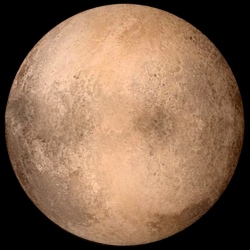
Astronomers have identified the most distant object yet in the Solar System. Observations with Japan’s Subaru telescope reveal the likely icy body to be some 15.5 billion km from the Sun – about three times further away than even far-flung Pluto. Scientists say their studies suggest that the object, catalogued as V774104 is some 500-1,000km across.
The previously recognised most distant object is the dwarf planet Eris. This body, which has a moon, Dysnomia, moves between 5.7 billion km and 14.6 billion km from the Sun. To put some of these numbers in context: Earth is 149 million km from the Sun, and even the most distant major planet – Neptune – seems close at 4.5 billion km, by these standards.
That said, the Voyager 1 probe is further away – just. The epic robotic explorer has now ventured 20 billion km from home. The big question is whether V774104 sweeps inwards from its present location, like Eris, or outwards, like the objects known as 2012 VP113 and Sedna.
These bodies are currently slightly closer in than Eris, but investigations of their orbits show they will reach far deeper into space, out to 66 billion km and 140 billion km, respectively. Models for Solar System formation suggest that such objects were probably not created in these weird, eccentric orbits.
One explanation is that they have been perturbed gravitationally and pulled on to their strange trajectories by a passing planet – perhaps one that was expelled from our Solar System early in its history. Some scientists even speculate that such objects could have been stolen from a star that formed from the same "nursery" of gas and dust as our Sun 4.6 billion years ago.
